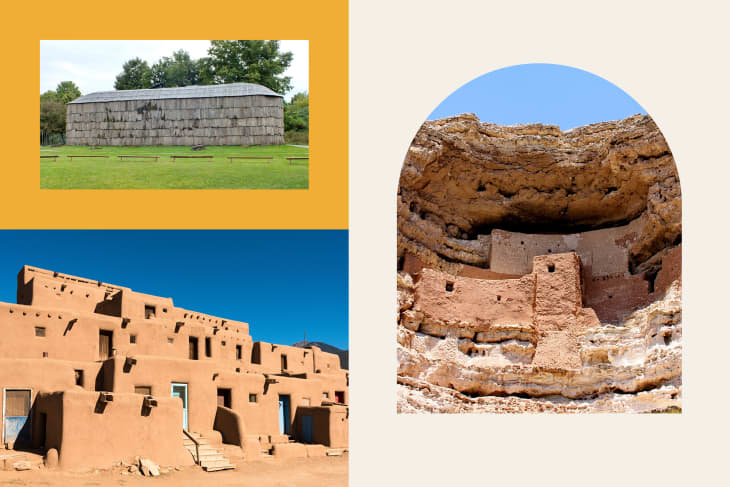What Modern Buildings Can Learn from Indigenous Architecture

As an Isleta Pueblo woman and someone also in the home design space, I see a lot of erasure of the history of Native peoples and their influence on sustainability, architecture, and design. Native peoples are responsible for many of the sustainable design features seen in architecture today — from building materials, to heating and cooling aspects of homes, to multi-family, community-oriented structures. I want to examine a few of those aspects and pay homage to the brilliance of Indigenous architecture.
Indigenous peoples used and still use materials to construct their homes in harmony with the land around them. Building materials often came from the land within a few miles of the build site. Nothing needed to be imported or manufactured, therefore the environmental impact was negligible. Native peoples of the American Southwest built and still build their homes from mud to create adobe, for instance, while Native peoples of the American Northeast build longhouses from trees and bark. Almost all Indigenous peoples use local, regenerative materials.
These local building materials are in stark contrast to the majority of homes built today, which use materials shipped from across the country and sometimes across the globe for construction. According to a study published by the UN Environment Programme and the International Energy Agency, buildings and construction together account for 36 percent of global final energy use and 39 percent of energy-related carbon dioxide (CO2) emissions when upstream power generation is included.
Locality of building materials and their harmony with the earth are also important when considering a building’s thermal performance. Indigenous people took into account the orientation and thermal properties of their homes to make the most of daylight and their materials. Adobe, for example, like my ancestors used, has thermal properties that keep it cool during the day and warm through the night, which was essential for living in New Mexico’s desert climate. My grandmother once fondly recalled that her home had specific design features to beat the heat. Like many adobe homes, hers had a door to the roof. On particularly hot nights, they would sleep on the flat roof and enjoy the cool night air — she called it “Indian air conditioning!”
Indigenous peoples also live in structures that are often multi-generational and emphasize the importance of community — an essential part of sustainability. The Sinagua, a pre-Columbian people who lived in Arizona’s Verde Valley around 1050 CE and eventually merged with tribes such as the Hopi, lived in a multi-level cliff dwelling. Referred to as Montezuma Castle, it’s an example of a very early high rise apartment, as it had about 20 rooms and multiple floors for intergenerational and community-based living. By living in a community environment, the tribe could share resources, energy and overall, and live a more sustainable life.
Indigenous architecture is sustainable, regenerative, and brilliant. It’s time to give Indigenous peoples the credit they deserve for being at the forefront of sustainable architecture and art.